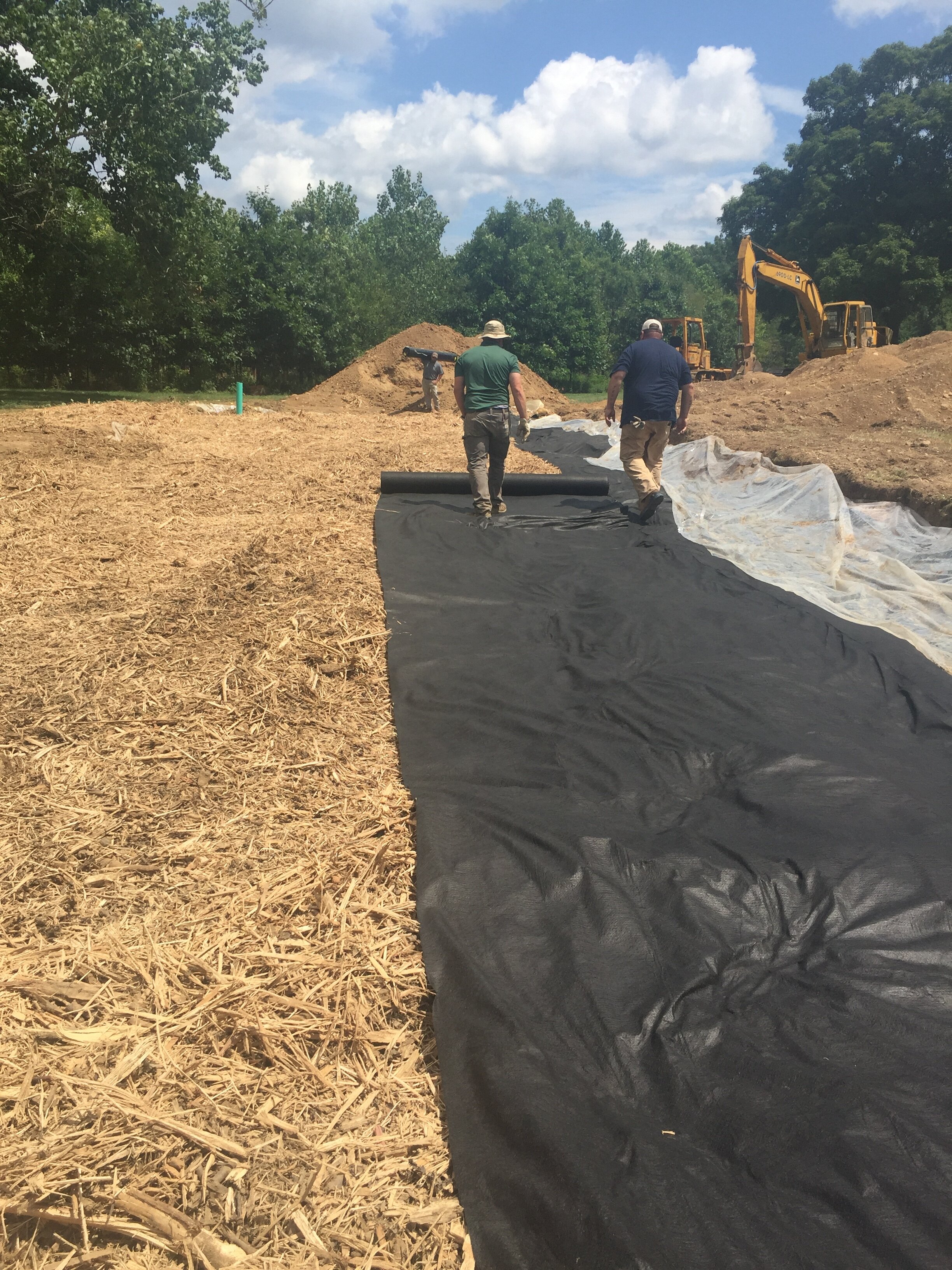Shenandoah Valley Bioreactors, Virginia, USA
New York Ironweed Vernonia novaboracensis growing at the Smith Creek Headwaters Spring
Project Summary
Working with the Harrisonburg Department of Public Works by Sieberts Creek and the Yancey farm by the Smith Creek Headwaters Spring, Ridge to Reefs constructed two spring bioreactors. These bioreactors capture and treat excess nitrogen before it flows downstream in the watersheds. This helps to prevent harmful algal blooms and improves the health of the watershed.
Problem
In areas with elevated nitrogen levels in groundwater, a single spring can discharge tens of thousands of pounds of nitrogen each year.
Solution
By diverting the springs into a bioreactor, thousands of pounds of nitrogen can be reduced in a cost effective manner. Spring bioreactors are highly efficient and operate for approximately fifteen years. A single bioreactor treating between a quarter of a million and one million gallons of spring flow each day can be expected to remove between 1,500 and 12,000 pounds of nitrogen each year.
Implementation
The town of Harrisonburg, Virginia had a diversion in place to take water from Sieberts Creek into a pond in Purcell Park. We intercepted the pipe and diverted the water into a bioreactor. The water is retained there for 8 hours before flowing to a pond in Purcell Park. This project protects the south fork of the Shenandoah River. On the Yancey farm, east of Harrisonburg, a second spring bioreactor is scheduled for construction with a similar design, removing excess nitrogen from the Smith Creek Headwaters Spring.
Outcomes
We estimate that the Sieberts Creek project alone will remove 1365 lbs of nitrogen per year from Blacks Run, which drains to the North River. Similarly effective nitrogen removal is expected from the Yancey Farm bioreactor treating the Smith Creek Headwaters Spring. This reactor, treating water from a nutrient richer source, is expected to remove up to 12,000 pounds of nitrogen each year.
Funders and Partners National Fish and Wildlife Foundation, Harrisonburg Department of Public Works, the Yancey Farm, Virginia Tech, and the USDA Natural Resources Conservation Service Harrisonburg Area Office












